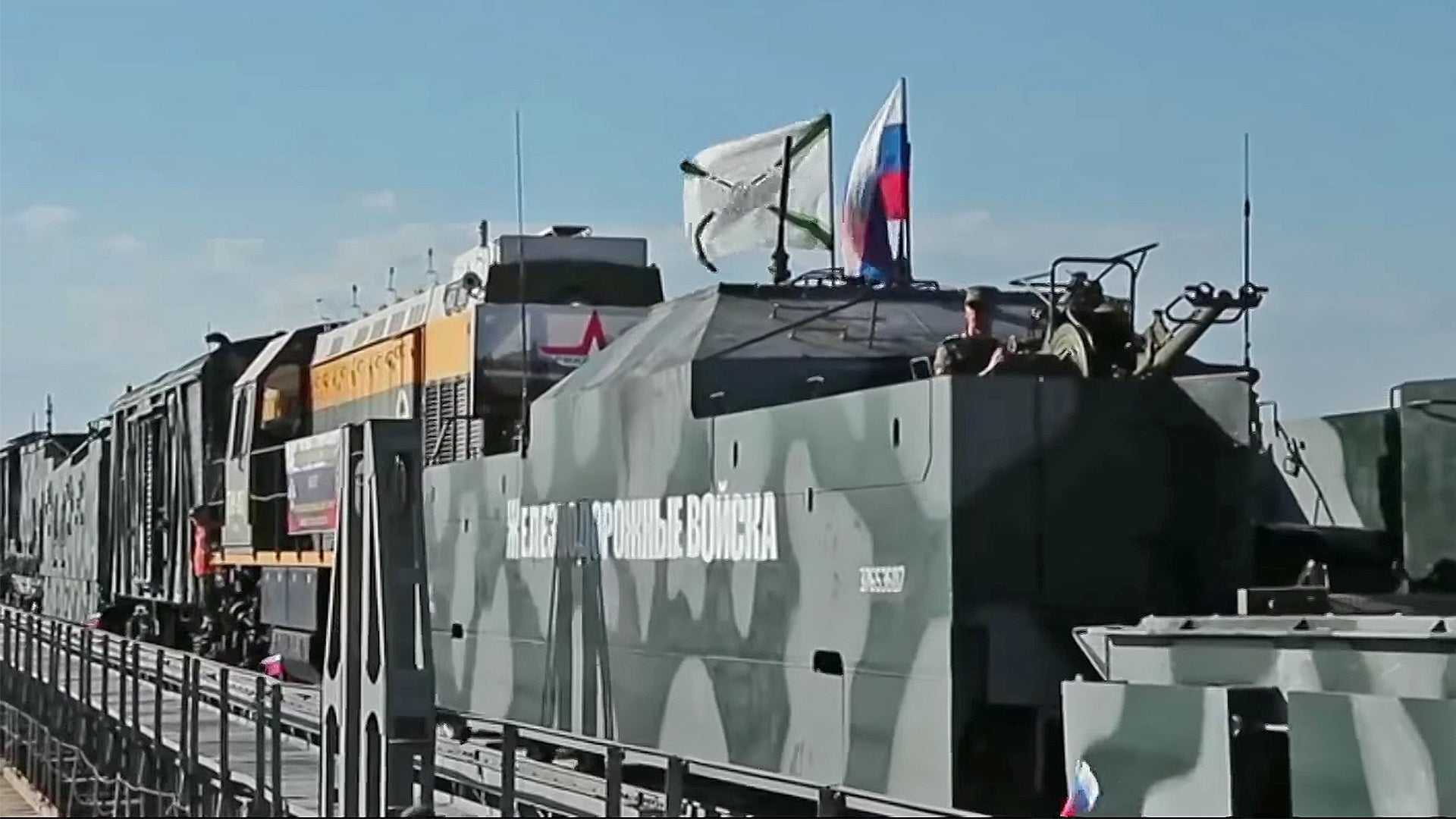Russia’s ongoing campaign to reinvigorate its armed forces has included the addition of new weapon systems and the refurbishment and upgrade of Cold War relics. Now it appears that armored trains, once a mainstay of Russian combat logistics, have been brought out of mothballs and thrust into drills. It is the first time these trains, named Baikal and Amur, have participated in exercises in a decade and a half.
The logistical exercise starts in the Volograd region and will move through Krasnodar before heading to North Ossetia and finishing in Crimea, the peninsula Russia seized from Ukraine in 2014.
The four armored trains from Russia’s post-Soviet era saw limited service in Chechnya and Georgia, but experts believed they were partially dismantled by the late 2000s. Now, Defense Minister Sergey Shoigu has ordered these trains back into combat-capable service—probably not a cheap move.
The configuration of Russia’s armored trains can vary, but they are capable of carrying tanks and APCs, and usually have platforms and armored cars that carry anti-aircraft guns and artillery. Armor-clad troop cars are also a standard feature, and the locomotives are substantially hardened against kinetic attacks. In any form, they look intimidating as hell.

The traditional mission of these trains is to escorts supply trains, repair tracks in a combat zone, clear mines, defend key logistics positions and support infantry. They can also transport very high-value material or personnel.
It all sounds very World War II, right? But there is something to the concept as the rails remain Russia’s most critical military logistical conduit. Moscow’s ability to rapidly morph its force posture along its western border, often using trains to do so, has even been identified by NATO leaders as an impressive and downright frightening capability.

It is notable that although these trains are back in service, they don’t seem to be upgraded with modern weapons and sensors, which mutes the concept’s relevance. One can imagine a modern armored train that is Kashtan or Panstir S1 equipped and features guided “smart” artillery.
The thing is that in an age of precision guided weapons and massive information, surveillance and reconnaissance (ISR) networks, totally predictable trains are vulnerable whether they are armored or not. Although when not fighting against a peer-state competitor—one without access to precision guided weapons and advanced ISR capabilities—the armored train is just as relevant as it was decades ago.
Russia obviously has some reason to put these trains back into service and to thrust them into this elaborate training exercise. Let’s hope one of them doesn’t make an appearance in eastern Ukraine or in the Baltics as part of a larger operation.
These armored trains are not the only way Russia is weaponizing the rails. The Kremlin is working to bring back rail-deployed intercontinental ballistic missiles with the project named Barguzin after the strong eastern wind that blows off Lake Baikal. The trains will have reinforced missile erector-launchers disguised to look like typical refrigeration cars, just as the Soviet-era versions did before they were retired in 1993.

These new nuke trains will tote around RS-24 ‘Yars’ ICBMs, Russia’s most capable and modern operational weapon of mass devastation. Like their ground-mobile ICBMs cousins, these trains will roam the Russian countryside, although in an ever more inconspicuous manner.
Russia aims to have the trains in service by 2019.
Contact the author Tyler@thedrive.com
